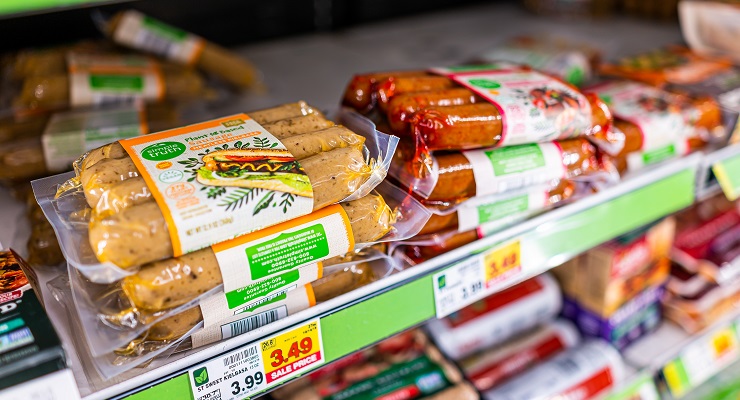
The most popular new year’s resolution, every year, is to eat healthier. The second, in most years, is to work out more. The third targets our financial goals, and what we might do about them.
But if you have listed eating healthier in your plan you might want to do a touch more research. Food labelling in Australia, despite increasing regulation and a bigger media focus, remains opaque, contradictory and bamboozling.
Let’s take “lite” or “light” on packaging. For the uninitiated it might seem like it means it’s light on calories. And it might. But it could also mean it’s light in texture, colour or taste — and not necessarily calories. Eating cheese simply of a different colour might not help the Christmas largesse around your waistline.
Good luck when it comes to baked not fried. That doesn’t mean it’s lower in either fat or energy; it simply describes a cooking method. Only animal products contain cholesterol, so cholesterol-free might be swimming in fat or kilojoules. No added sugar might still be high in kilojoules because of how much natural sugar it contains.
Reduce fat or “reduced salt? All that means is that there is less fat or salt than in another standard variety. It’s not a commentary on the health benefits of what you’re loading into your pantry.
And so the list goes on. Diet food has been artificially sweetened. Low fat means it can contain up to 3% fat, and no fat can be up to 1% fat. If it’s organic, it’s organic. But don’t confuse that with sugar, fat or kilojoule levels because it might contain the same amount as the non-organic version.
And it’s not just food. Labels, instructions and get-out clauses continue to be tricky and difficult to understand, as greater transparency is demanded in almost all other areas of business.
Look at the instructions to put together a simple — so they say — school desk. Or the warranty on a toaster. Or the small print in an event cancellation during COVID-19. Or even a mortgage document.
It’s unfair, lacks the spirit that should run parallel with labelling laws, and leads to confusion for consumers.
Dr Emma Beckett, a lecturer in the school of environmental and life sciences at the University of Newcastle, says despite greater regulation, food labelling can still be manipulated to “give off a healthier vibe than it really is’’. To me, that sounds like the real estate advertisement for the renovator in the suburbs — a dilapidated, roofless shack struggling to stay upright.
Although words are regulated, consumers take them at face value. Beckett says that to have a label, a product must be processed and packaged, and that’s why the healthiest foods — in fruit and vegetable sections — don’t carry labels.
She says while labelling regulations continue to evolve, business and industry are able to get ahead of the rules. For example, while regulation now governs the use of diet and low-fat descriptions, it hasn’t “caught up with organic and plant-based’’ products. Recently she stumbled across plant-based rice that wasn’t actually rice. The reality changed faster, she says, than the regulation implemented to govern it.
So what about plant-based sausages or ham? What’s in them? Should that term even be allowed? And how do you know whether it’s progressing that new year’s resolution?
In simple terms, you probably don’t. At least until industry stops treating consumers as fools and actively offers up-to-date labels that can be read without needing binoculars. In a world where so much money is spent on health and fighting disease, food labelling shouldn’t require government regulation. Just a dose of low-cal decency.








You’d think that the way people could eat “healthier” would be to largely avoid foods with any labelling at all.
Michael Pollan suggested not eating anything that our grandparents would not have recognised as food.
Sounds like good advice to me.
An entirely nutrient-free article. Crikey would be healthier without such padding.
“May contain traces of nuts.”
Have a go at the lobby groups that fought to prevent changes to labelling laws (that were in the interest of consumers) – including the AFGC under Kate Carnell (“ex Liberal ACT Chief Minister”).
The US sugar lobby succeeded under Reagan in having the USDA decree it just tickety boo to derive more than 40% of daily calorie intake from sugar.
This was before they were given the blank cheque of fuel ethanol.
The 2015-2020 Dietary Guidelines for Americans recommend limiting added sugars to less than 10% of total calories per day (50 grams) but makes no mention of total intake from the “pure, white & deadly” (© Prof John Yudkin who had a distinguished 40 year career destroyed by the UK food industry for his trouble) stuff.
Nowadays the healthy diet should exclude any processed, prepared, packaged foods. It’s very hard to find any processed food that does not have sugar and salt included. Decades back my mother put on strict salt free diet, and was not allowed Acta-vite (chocoflavoured vitaminish type powder) so Dr recommended Ovaltine. Nowadays Ovaltine has salt added! Same with famous breakfast cereal. No salt in traditional version – current one has added salt! I have the book “Salt Sugar Fat” by Michael Moss (2013 publication) which is still relevant
today. Food production gives huge profits to corporations, so lobby groups are always finding loopholes or the famous “working with industry/govt” to find answers to problems. This usually means a few more years of profits interspersed with meetings and reports that basically change nothing. Let’s look at how unhealthy the younger age group is today. It’s not all due to “bad” food but its surely near the top of the list.
Excluding any processed, prepared or packaged food sounds a bit hair shirt to me. Some of the most enjoyable things are covered by that description; wine, especially Champagne, Camembert, Brie & a host of other cheeses, muesli, butter, wasabi, mustard etc.
The bulk of my diet is fish, meat & vegetables but eating would be a lot less satisfying without the processed additions.
If actions speak louder than words then Government and Business do not give a damn about the health of the general population.
You would think that at least the government would give a damn if for no other reason that improvements to labelling cost them little but save them much in dollars.